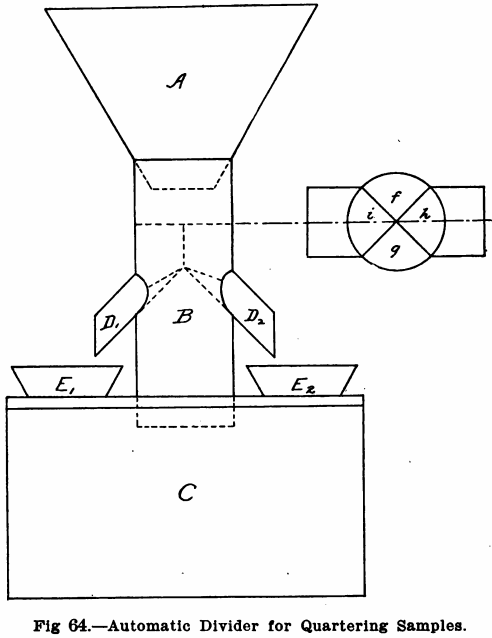Laboratory Filtration System
Filtration by Vacuum The vacuum or suction arrangement shown has four openings and hence four filtrations can be made at the same time. If less than this number are ample for the work to be done, the table may be shortened accordingly. In an iron and steel laboratory, where many samples of pig iron are […]
Assay Furnaces

Assay furnaces are made to use three kinds of fuel—gaseous, liquid and solid. Those using gas are very little employed, usually only in city laboratories where but a few assays are made. They are, of course, very convenient when occasional assays are made, as in the laboratory of a consulting chemist, who is sometimes called […]
Sample Preparation Laboratory Equipment

The apparatus used to reduce samples of ore, rock, coal, minerals, etc. from the dimensions usually encountered as they are brought to the laboratory, to the fine powder necessary for the analysis, may be divided into two classes, (1) crushers and (2) pulverizers. The former are used simply to prepare the material for the latter. […]
Electrochemical Analysis Equipment

Electrolytic determinations are now part of the routine of many commercial laboratories and means for carrying out such work will usually be found in every well-equipped metallurgical laboratory, no matter how small it may be. In determining copper, nickel, bismuth, etc., the electrolytic methods are far more satisfactory than the precipitation or volumetric ones, hence […]
Laboratory Water Distillation Equipment

Automatic Stills For the preparation of distilled water in the laboratories, nothing are quite so handy as the automatic laboratory stills sold by various dealers in chemical supplies. One of the best forms of these is the Jewell automatic water still, another good form is the Rochlitz automatic water still, Fig. 47, made for The […]
Analytical Balances Support & Accessories

Brick Pier Support It is essential that the balance, used for analytical work, should be mounted on some firm support; as, not only does the accuracy of the weighings depend upon the freedom of the instrument from vibration and jar, but also the life of the balance itself. It is equally important, also, from the […]
Burette Stand

Burette Stand A neat burette table is shown in Fig. 25. It is 32 inches high, 4 feet long, and 2½ feet wide. It has a shallow cupboard below and a narrow drawer. The bottom of the drawer extends only half way across the table, so that it does not interfere with the tubes leading […]
Crucibles

In the scheme which we outlined in the opening paragraph of this section, of having a place for everything, it was stated that there should be a separate table for ignitions. The size of this table will, of course, depend on the number of ignitions which are to be made at one time. Ten or […]
Laboratory Fume Hood

Upon nothing does the comfort of the inmates of a laboratory so much depend as upon the hood, and it is essential that this should “draw” well in order to carry off the fumes. Simple Laboratory Fume Hood Design Fig. 4 shows the simplest form of hood and one which will draw best of all, […]
Laboratory Sinks

In most college laboratories and in some large industrial ones the sinks are located in the middle or at the ends of the work benches. In a small laboratory, however, it will be found more convenient to have a separate table for the sink and it will save plumbing to fit this table up for […]
